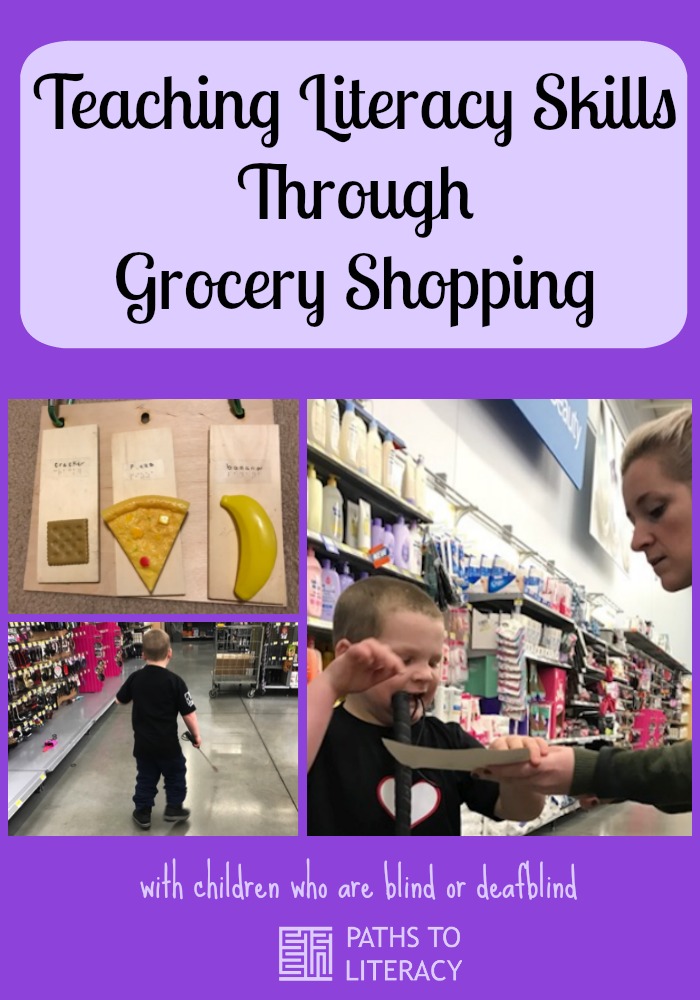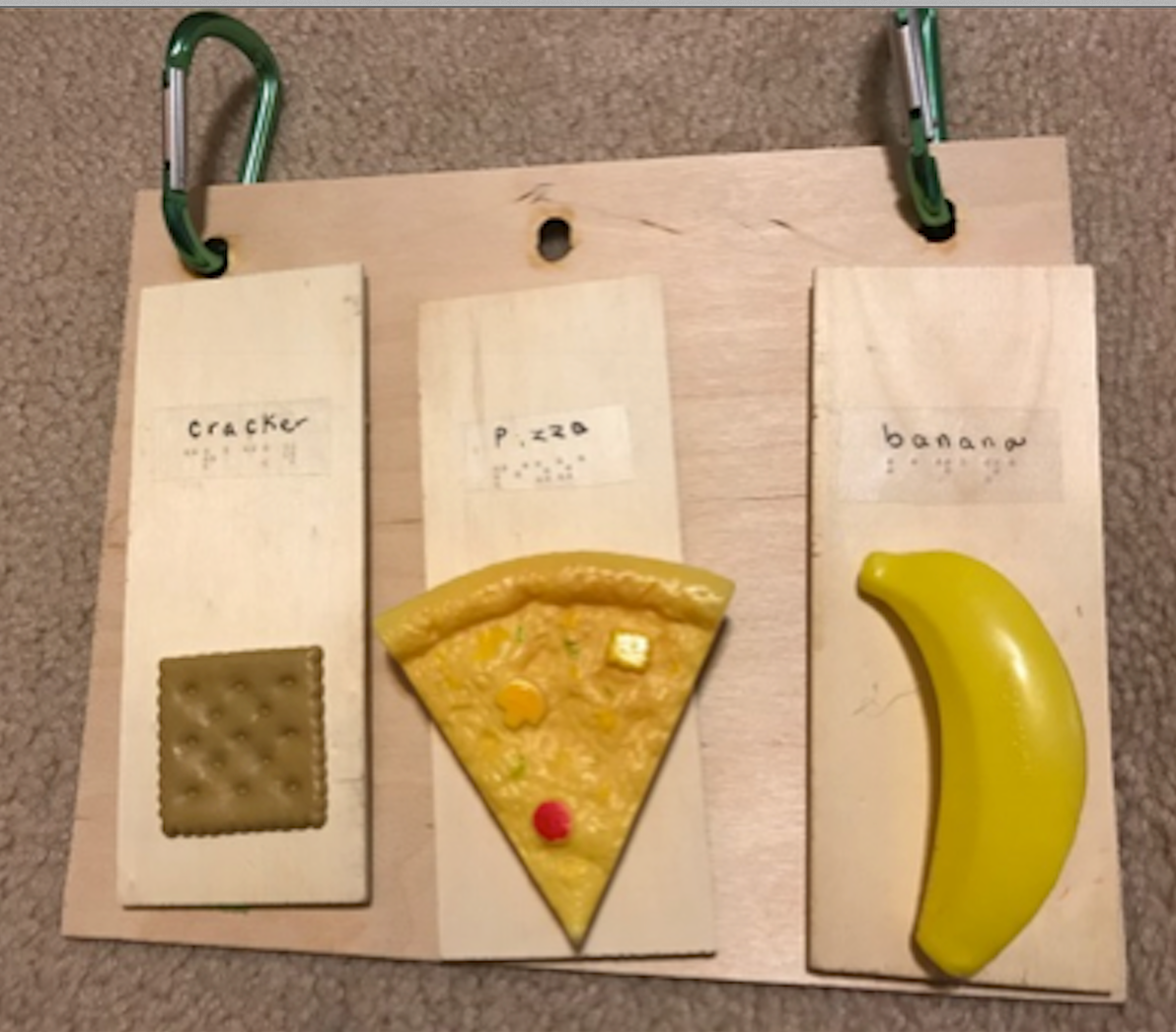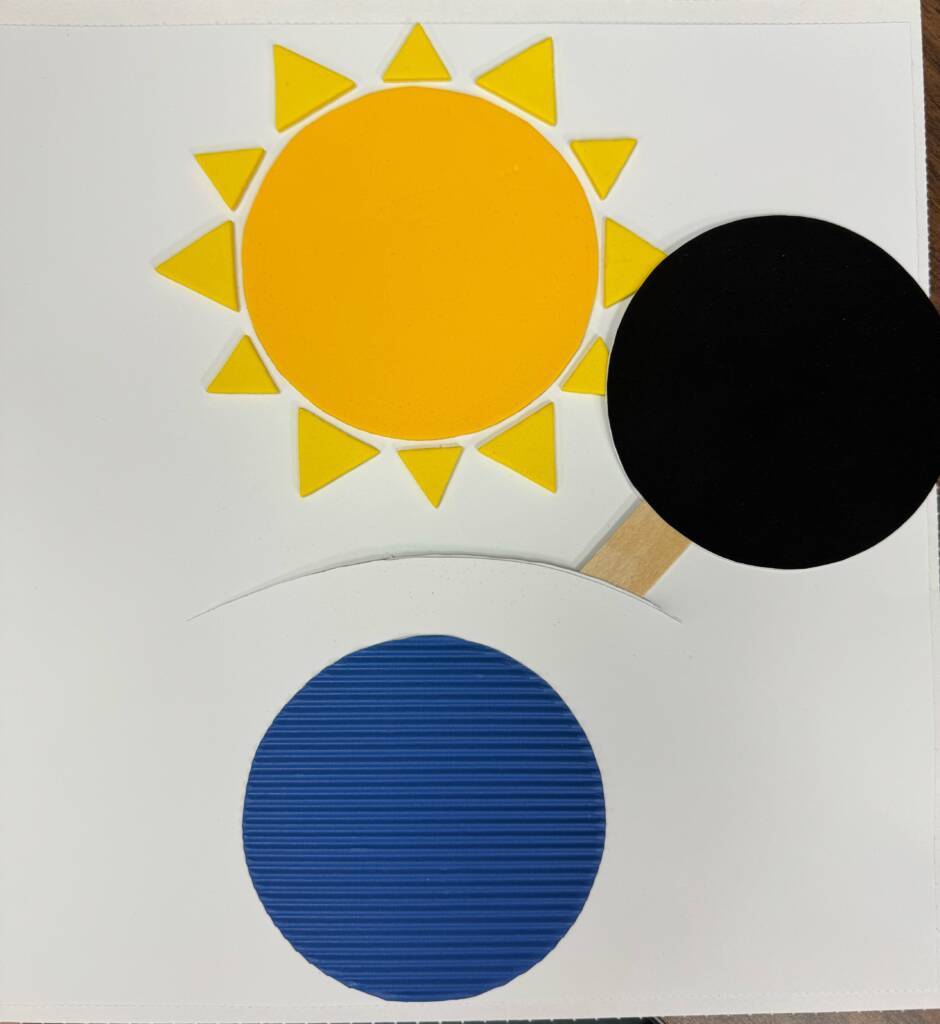I am the mother of two sweet boys. My oldest, Liam, is 7 years old and is deafblind. His first language is American Sign Language. My youngest, Finn, is 4 years old and has typical vision and hearing. Going to the grocery store with my two boys has not always been the easiest or most enjoyable experience. I was determined, early on, to think of ways to make the experience of going to a grocery store possible, enjoyable, and meaningful. Of course, I wanted to include literacy in the excursions by using an accessible grocery list!
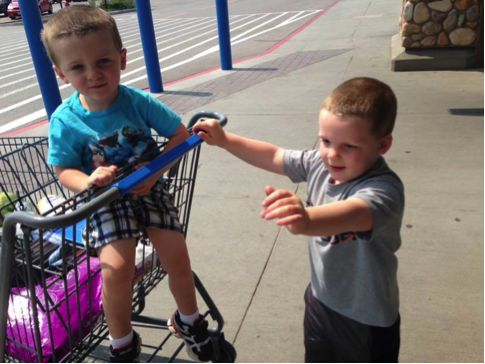
Getting Started
Our grocery store trips started when Liam was around 3 years old and had limited language and communication skills. Finn was a baby at the time. Liam, never would stay put in a grocery cart. I would put Finn in the cart and try to push the cart with one hand and hold Liam’s hand in the other hand. Every two steps or so Liam would lurch out and try to grab whatever he could get his hands on. If I had to go grocery shopping alone with both boys I would only get a few items and get through the store as quickly as possible. By the end of the trip I was worn out and on the verge of tears. Liam was frustrated as well, as he didn’t always know what was going on and couldn’t express himself well yet. I refused to give up, as I knew that, with some practice and planning, it had to get easier — it had to get better.
As Liam’s communication skills grew our trips became more successful and happy (still super-busy, but better!). I was able to explain to him where we were going, what we needed to buy, and allow him to help put items in the cart. Liam also began helping to pay for our items when we checked out. Early on, I created grocery lists for Liam to follow along with as we shopped. During our most recent trip, my youngest sat in the cart to collect items from Liam and later helped push the cart while I allowed Liam more independence by walking down the aisles by himself with his cane.
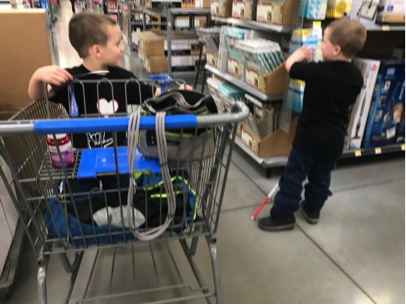
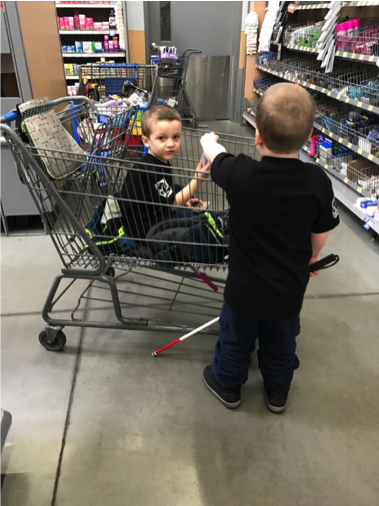
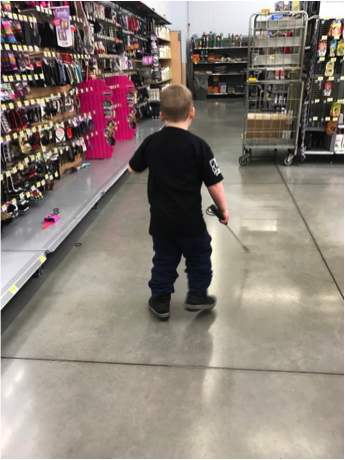
If Liam touches items on the shelves, he now knows to be careful so things don’t fall over onto the floor. (We still broke open a box of fruit cups, but it was an accident.) I still consider the trip a success.![]() He enjoys being told what items are on the shelves of the aisles we are in and this helps him to develop an understanding of categories, such as vegetables or bread. We have created a routine that works for us and can finally go to the grocery store. It is now more enjoyable and a lot less stressful. Going to Walmart is one of Liam’s favorite things to do; he is well known at our Walmart!
He enjoys being told what items are on the shelves of the aisles we are in and this helps him to develop an understanding of categories, such as vegetables or bread. We have created a routine that works for us and can finally go to the grocery store. It is now more enjoyable and a lot less stressful. Going to Walmart is one of Liam’s favorite things to do; he is well known at our Walmart!
Beginner’s List
Liam’s first grocery list was one that could be hooked to the grocery cart. It had Velcro pieces that included an object symbol that represented the items we needed to buy. I paired braille with the objects, even though he was not reading braille at the time. When we bought the items he could take them off the list and put them in the finished box. I kept the list short and simple with some of his favorite foods.
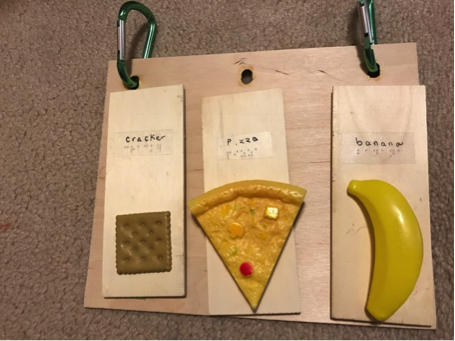
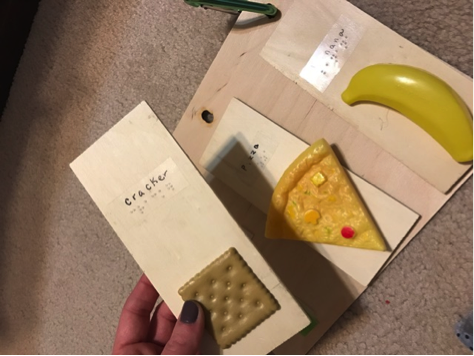
Variations:
You could add real-life object representations onto the list. For example: for milk you could add the cover of a milk carton or the handle. For pizza, you could add a part of the pizza box.
Transitional List
I glued real objects again on a wooden page paired with braille. This time the items were not removable and the page was slightly smaller. Sometimes with lists such as this I would bring puffy stickers, so that Liam could take them off and place them next to the items we bought, as a sort of check-off system.
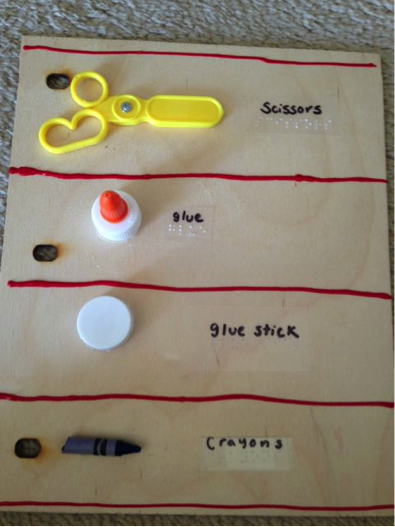
Braille-Only List
Liam is now a braille reader. His lists have evolved and now consist of items in braille only on cardstock paper. We review the items before we begin our trip and he gets to help us stay on track with our shopping as he reads off the list to tell us what is next. Lists are very motivating for Liam and give our trip a purpose. Braille lists have been a huge part of making our shopping trips a successful experience. I also, of course, make lists for Liam’s little brother for him to follow along with too.
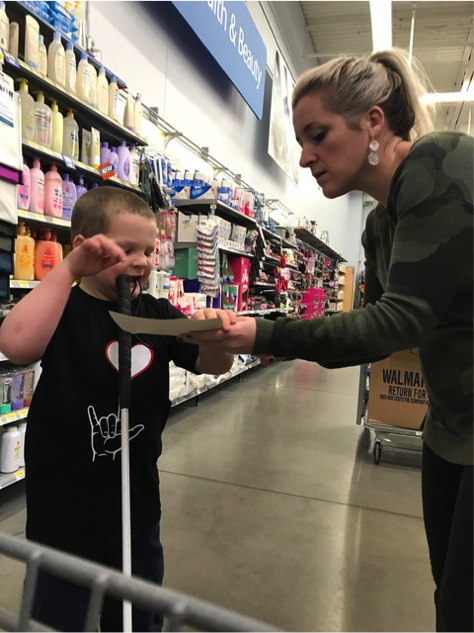
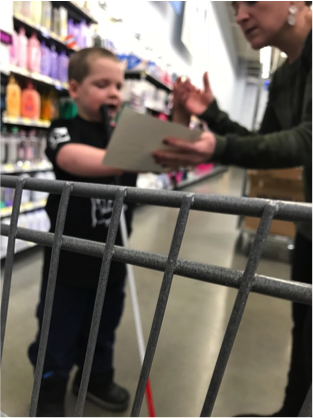
List of Ideas for Future
I hope to now start keeping a grocery list on the fridge, where Liam can help me add items as the week goes on. He and I are both excited about giving him ownership of the list!
For more ideas about making shopping accessible, see also: Making Back-to-School Shopping Meaningful, Accessible and Fun.
